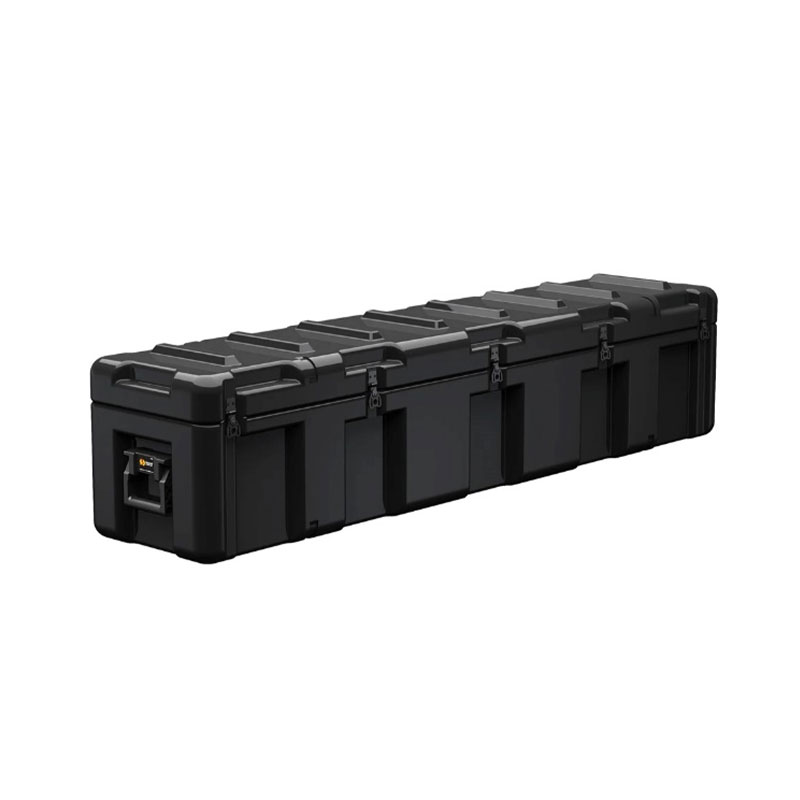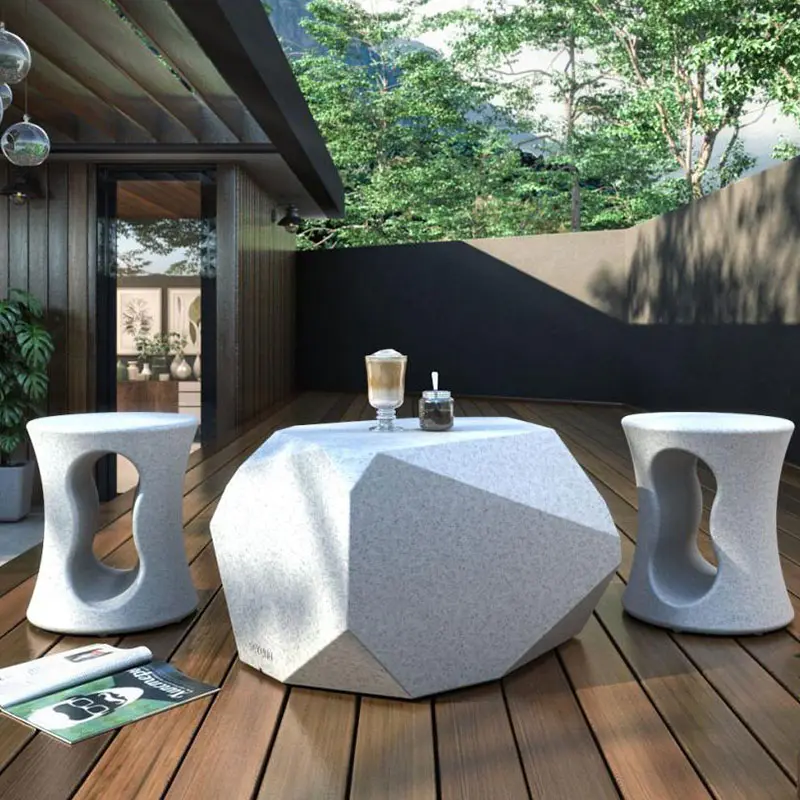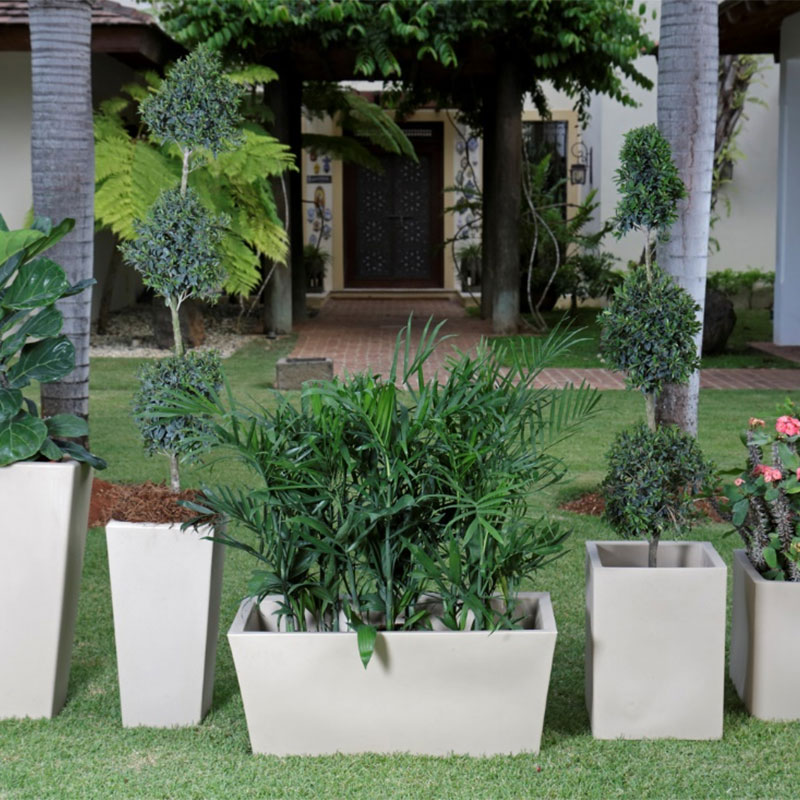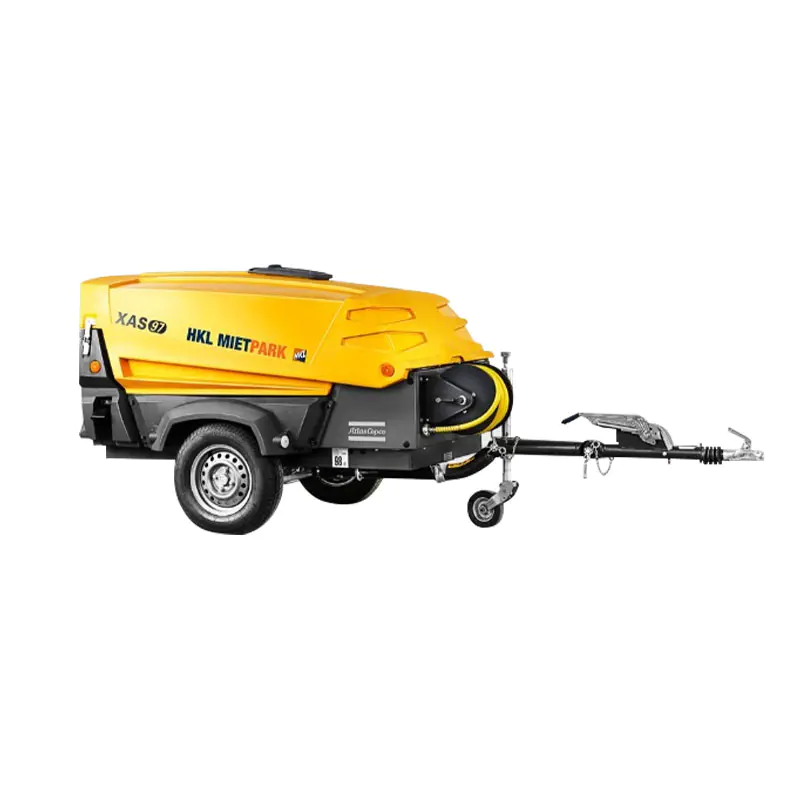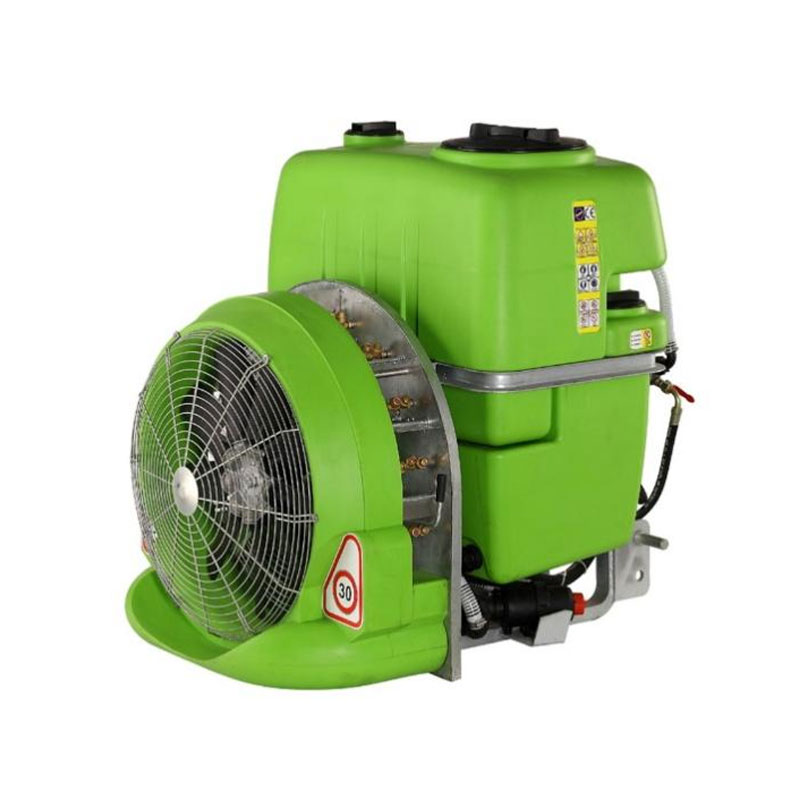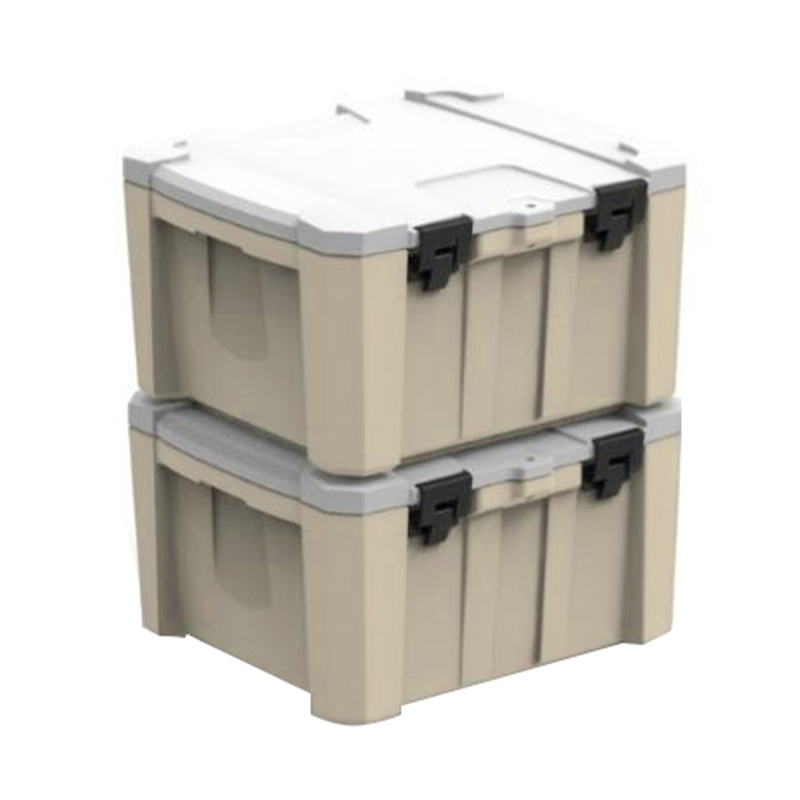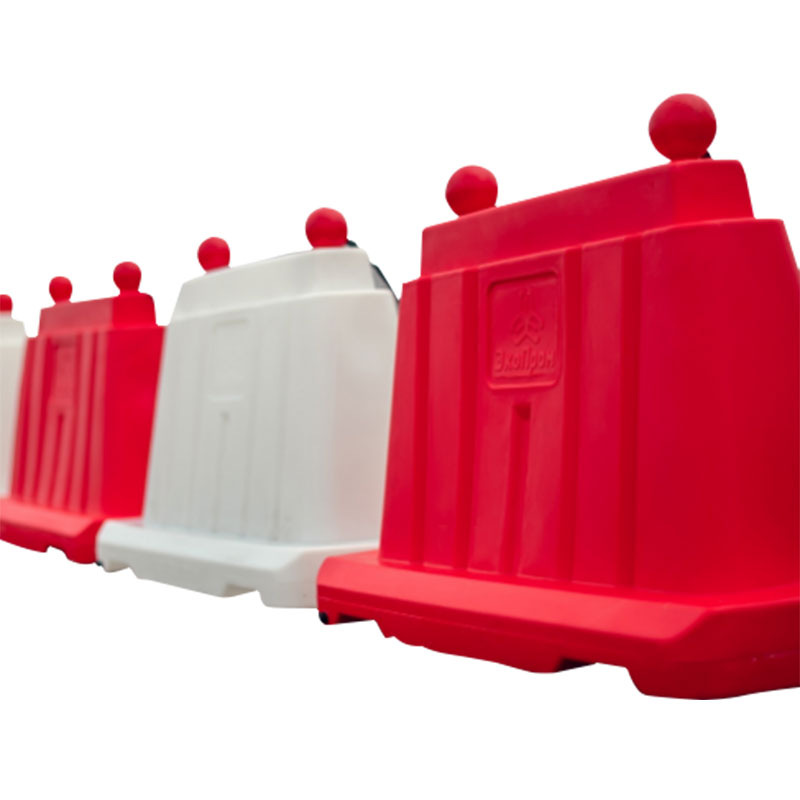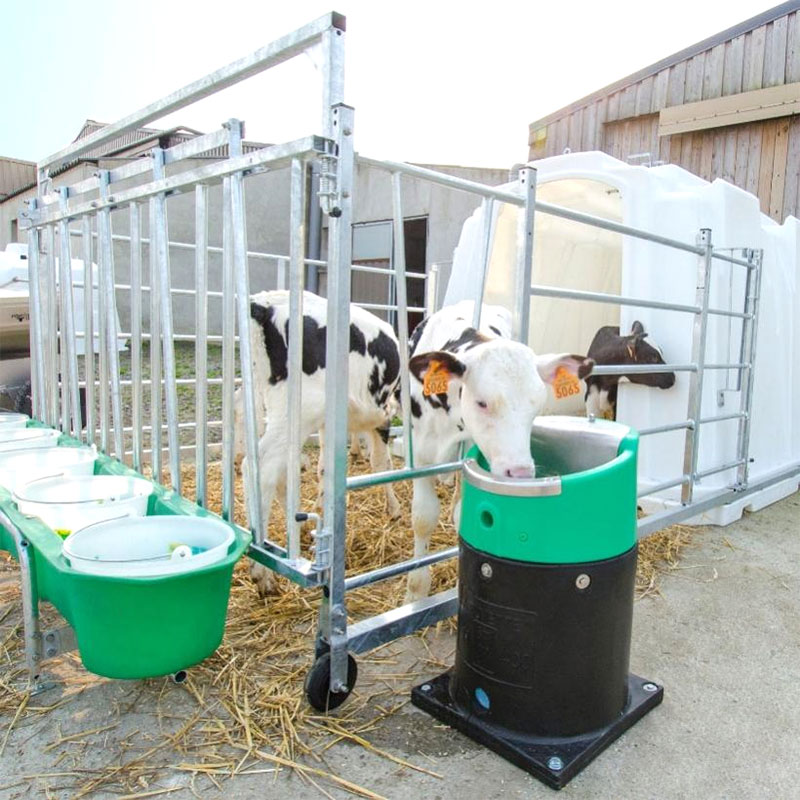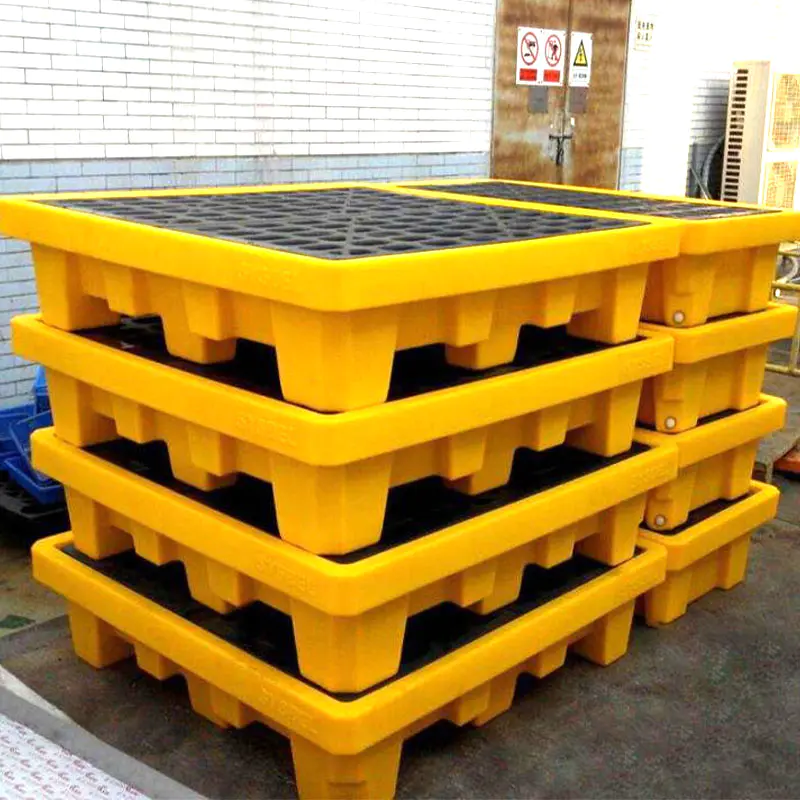Roto-molding principle and structural characteristics of flower pot molds
As the horticultural industry is booming, flower pots are indispensable gardening products, and their production technology is constantly innovating. With its unique advantages, rotational molding has become an important way to produce flower pots. In-depth understanding of the principles of rotational molding and the structural characteristics of flower pot molds is the key first step to achieve efficient production and precise molding of flower pot gardening rotational molding molds.
Roto-molding, also known as rotational molding, is based on the principle of adding a certain amount of plastic powder into the mold cavity, then closing the mold, rotating the mold around two perpendicular axes through a mechanical device, and heating the mold at the same time. During the rotation and heating process, the plastic powder is gradually and evenly coated, melted and bonded to the surface of the mold cavity under the combined action of gravity and heat, forming a complete plastic product that is consistent with the shape of the mold cavity. After the plastic is completely melted and plasticized, stop heating and cool the mold to solidify the product. Finally, open the mold and take out the molded flower pot.
This molding process has many advantages. First, rotational molding can produce hollow and complex-shaped products, which is very suitable for garden flower pots with various shapes. Whether it is an artistic flower pot with a unique shape or a functional flower pot with a special functional structure, the rotational molding process can easily achieve it. Secondly, the rotational molding mold is relatively simple and low-cost. Compared with injection molds, rotational molding molds do not require complex pouring systems and ejection mechanisms, and their structures are simpler, and the manufacturing difficulty and cost are correspondingly reduced, which enables companies to quickly put into production at a lower cost when developing new products.
The structural characteristics of the flower pot mold are important factors in determining the quality of flower pot molding. From the overall structure point of view, the flower pot mold is usually composed of an upper mold and a lower mold, and the upper and lower molds are closed and opened by a clamping mechanism. The design of the clamping mechanism needs to ensure that the upper and lower molds can fit tightly to prevent the leakage of plastic powder during the rotational molding process, and at the same time, it should be easy to operate and improve production efficiency. The shape of the mold cavity directly determines the shape of the flower pot, and its surface quality and dimensional accuracy have an important influence on the molding effect of the flower pot. In order to ensure that the surface of the flower pot is smooth and flat, the surface of the mold cavity needs to be finely processed and polished to reduce the surface roughness. In addition, the exhaust system of the mold is also an important part. During the rotational molding process, the air in the mold cavity needs to be discharged in time, otherwise defects such as bubbles and dents will be formed on the surface of the flower pot. Therefore, the reasonable design of the position and size of the exhaust hole can effectively discharge the air in the cavity and ensure the molding quality of the flower pot.
Taking the common round flower pot mold as an example, its upper and lower molds usually adopt a split structure, and a sealing groove is set on the edge of the mold. The sealing strip is installed to ensure the sealing after the mold is closed. A certain number of exhaust holes will be set at the bottom and side of the mold. The position and size of the exhaust holes are determined through precise calculation and testing to ensure the best exhaust effect without affecting the strength of the mold. For some flower pot molds with complex patterns or decorations, special carving or processing is required on the surface of the mold cavity to ensure that the pattern on the surface of the flower pot is clear and realistic.
With the continuous advancement of science and technology, rotational molding technology and the structural design of flower pot molds are also developing. For example, the use of computer-aided design (CAD) and computer-aided manufacturing (CAM) technology can more accurately design the structure and process the mold, and improve the design and manufacturing efficiency of the mold. At the same time, the application of new mold materials and the development of mold surface treatment technology also provide strong support for improving the performance and service life of flower pot molds.
A deep understanding of the principles of rotational molding and the structural characteristics of flower pot molds are the basis for optimizing the production process of flower pots and improving product quality. Only by fully realizing the advantages of rotational molding and the importance of mold structure can we continuously improve and innovate in actual production, realize the efficient production and precise molding of flower pot gardening rotational molding molds, and meet the market demand for high-quality gardening flower pots.
Material selection and durability analysis of roto-molding molds for garden flower pots
In the production process of roto-molding molds for gardening flower pots, the selection of mold materials is crucial. It not only directly affects the performance and service life of the mold, but also affects the production efficiency and product quality of the flower pots. At the same time, in-depth analysis of the durability of mold materials can help companies better understand the use of molds, reasonably arrange production and maintenance plans, and thus achieve efficient production and precise molding of roto-molding molds for gardening flower pots.
Roto-molding mold materials need to have a variety of performance characteristics to meet various requirements in the production process. First of all, good thermal conductivity is one of the key factors. During the roto-molding process, the mold needs to transfer heat quickly and evenly so that the plastic powder can be quickly melted and plasticized. If the thermal conductivity of the mold material is poor, the plastic will be heated unevenly, resulting in local overheating or overcooling, affecting the molding quality of the flower pot, and causing defects such as deformation and cracking. Secondly, the mold material should have high strength and hardness. During the roto-molding process, the mold needs to withstand certain mechanical and thermal stresses, especially during frequent opening and closing operations and high-temperature heating and cooling cycles, the mold is prone to deformation and wear. Therefore, choosing materials with high strength and hardness can ensure that the mold maintains good dimensional accuracy and shape stability during long-term use. In addition, the mold material should also have good corrosion resistance and processing performance. Since some chemical additives may be used in the roto-molding process, the mold material needs to be able to resist the corrosion of these chemicals. At the same time, in order to reduce the manufacturing cost of the mold and improve production efficiency, the material should be easy to process and shape, and convenient for cutting, drilling, polishing and other processing operations.
At present, the materials commonly used for rotational molding of garden flower pots are mainly aluminum alloy, steel and composite materials. Aluminum alloy has the advantages of low density, good thermal conductivity and excellent processing performance, and is one of the most widely used materials in rotational molding molds. It can quickly transfer heat, so that the plastic powder is evenly heated, which helps to improve the molding quality and production efficiency of the flower pot. At the same time, the weight of aluminum alloy is light, which is convenient for the handling and installation of the mold and reduces the labor intensity. However, the hardness and wear resistance of aluminum alloy are relatively low, and it is easy to wear during long-term use, and regular maintenance and repair are required. Steel has high strength and hardness, good wear resistance and corrosion resistance, can withstand large mechanical and thermal stress, and is suitable for the production of large or complex flower pot molds. However, the thermal conductivity of steel is relatively poor, and it takes a longer heating time during the rotational molding process, which may affect the production efficiency. In addition, the weight of steel is large, which increases the difficulty of handling and installing the mold. Composite materials are emerging mold materials in recent years. It combines the advantages of multiple materials and has the characteristics of light weight, high strength, good thermal conductivity and strong corrosion resistance. For example, glass fiber reinforced plastic (FRP) composite materials not only have good comprehensive performance, but also have relatively low cost, which makes up for the shortcomings of aluminum alloy and steel to a certain extent. However, the processing technology of composite materials is relatively complicated, and has high requirements for production equipment and technology.
The durability of mold materials is affected by many factors. First of all, the use environment is an important factor. If the mold is in a high temperature, humid or corrosive gas environment for a long time, it will accelerate the aging and corrosion of the mold material and reduce the service life of the mold. Secondly, the production process parameters will also affect the durability of the mold. During the rotational molding process, excessive temperature and rotation speed will increase the thermal stress and mechanical stress of the mold, resulting in mold deformation and increased wear. In addition, the frequency of use and maintenance of the mold are also directly related to its durability. Frequent use will cause the mold to wear and fatigue faster, while regular maintenance, such as cleaning, lubrication, and rust prevention, can effectively extend the service life of the mold.
In order to improve the durability of rotomolding molds for garden flower pots, a variety of measures can be taken. On the one hand, the mold material should be reasonably selected according to the specific production needs and the use environment. For the production of small flower pots with high surface quality requirements, aluminum alloy molds can be given priority; for the production of large flower pots with complex shapes and high strength requirements, steel molds may be more suitable; and for some occasions with special requirements for weight and performance, composite molds can be tried. On the other hand, optimize the production process parameters to avoid long-term operation of the mold at excessively high temperatures and speeds, and reduce the stress on the mold. At the same time, establish a complete mold maintenance system, regularly inspect, clean, lubricate and repair the mold, promptly discover and deal with problems with the mold, and ensure that the mold is always in good working condition.
The material selection and durability analysis of the rotational mold of the garden flower pot are important links to achieve efficient production and precise molding. Only by comprehensively considering various factors, rationally selecting mold materials, and taking effective measures to improve the durability of the mold can the smooth production of flower pots be guaranteed and the economic benefits and market competitiveness of the enterprise be improved.
Control of key parameters during production (temperature/speed/cooling)
In the rotomolding process of garden flower pots, precise control of key parameters such as temperature, rotation speed and cooling is the core element to achieve efficient production and precise molding of flower pots. These parameters are interrelated and affect each other. Improper control of any parameter may lead to quality problems in flower pots, affecting production efficiency and product quality. Therefore, it is very important to have a deep understanding and reasonable control of these key parameters.
Temperature is one of the most critical parameters in the rotomolding process, which directly affects the melting and plasticization process of the plastic powder. At the beginning of rotomolding, the mold needs to be heated to a suitable temperature so that the plastic powder can melt quickly and evenly coat the surface of the mold cavity. If the temperature is too low, the plastic powder cannot be fully melted, which will cause defects such as unevenness and stratification on the surface of the flower pot; if the temperature is too high, the plastic may decompose and age, affecting the physical properties and appearance quality of the flower pot. Different types of plastic materials have different melting temperature ranges. For example, the melting temperature of polyethylene (PE) is generally between 120℃ and 140℃, and the melting temperature of polypropylene (PP) is about 160℃ to 170℃. In actual production, it is necessary to accurately set the heating temperature of the mold according to the plastic material used, and monitor and adjust the temperature in real time through the temperature control system to ensure that the temperature is stable within the appropriate range.
In addition to the heating temperature of the mold, the heating time also has an important influence on the molding quality of the flower pot. If the heating time is too short, the plastic powder cannot be completely melted and plasticized, which will cause unmelted particles inside the flower pot, affecting the strength of the product; if the heating time is too long, it will increase the production cycle, reduce production efficiency, and may also cause excessive aging of the plastic. Therefore, it is necessary to determine the optimal heating time for each plastic material and mold specification through experiments and experience accumulation. During the production process, the heating time can be accurately controlled by a timer or an automated control system.
Rotational speed is also an important parameter in the rotomolding production process, which determines the movement state and distribution uniformity of the plastic powder in the mold cavity. The appropriate rotational speed can make the plastic powder evenly coated on the surface of the mold cavity under the action of gravity and centrifugal force to form a product with uniform thickness. If the rotational speed is too low, the plastic powder cannot be fully dispersed, which will lead to uneven wall thickness of the flower pot, and the phenomenon of being too thick or too thin in some parts; while if the rotational speed is too high, the plastic powder may produce violent movement in the mold cavity, resulting in the air being unable to be discharged in time, forming bubbles or cavities inside the flower pot. Generally speaking, the rotational speed of the rotomolding mold is between 5 and 30 rpm, and the specific rotational speed needs to be adjusted according to the size, shape and characteristics of the mold and plastic material. For large molds or complex-shaped flower pot molds, the rotational speed can be appropriately reduced to ensure that the plastic powder can fully fill the mold cavity; for small molds or simple-shaped flower pot molds, the rotational speed can be appropriately increased to improve production efficiency.
The cooling process is the last key link of rotational molding, which has an important influence on the dimensional accuracy and surface quality of the flower pot. During the cooling stage, the mold and the product need to be cooled evenly to solidify the plastic. If the cooling is uneven, internal stress will be generated inside the flower pot, resulting in defects such as deformation and cracking. The cooling speed also needs to be reasonably controlled. If the cooling speed is too fast, the plastic surface will solidify quickly, while the inside is still in a molten state, resulting in the inability to release the internal pressure, resulting in internal voids or deformation; if the cooling speed is too slow, the production cycle will be extended and the production efficiency will be reduced. There are two common cooling methods: water cooling and air cooling. Water cooling has the advantages of fast cooling speed and high efficiency, but it is necessary to pay attention to controlling the temperature and flow of water to avoid quality problems of the flower pot due to too fast cooling; air cooling is relatively mild and suitable for occasions where the cooling speed is not required. In actual production, the appropriate cooling method and cooling parameters can be selected according to the size, shape and characteristics of the plastic material of the flower pot. For example, for large flower pots or flower pots with thick walls, a combined cooling method of water cooling followed by air cooling can be used to quickly lower the temperature of the mold and the product, and then slowly cool the product through air cooling to eliminate internal stress.
In order to achieve precise control of key parameters such as temperature, speed and cooling, enterprises can adopt advanced automatic control systems. Sensors monitor the temperature, speed and cooling status of the mold in real time and feed the data back to the control system. The control system automatically adjusts the working status of the heating equipment, rotating device and cooling system according to the preset parameter values to ensure that each parameter is always kept within the optimal range. At the same time, enterprises should also strengthen the training of operators to make them familiar with the production process and the control methods of key parameters, so that they can promptly discover and deal with abnormal parameter problems in the production process.
In the rotomolding production process of garden flower pots, precise control of key parameters such as temperature, rotation speed and cooling is the key to achieving efficient production and precise molding. Only by deeply understanding the role and influence of these parameters, rationally selecting and adjusting parameter values, and adopting advanced control technology and management methods can we produce garden flower pots with excellent quality and precise size to meet market demand.
Flower pot mold maintenance and common problem solutions
In the process of rotomolding of garden flower pots, the maintenance of flower pot molds is an important guarantee to ensure its normal operation, extend its service life, and achieve efficient production and precise molding. At the same time, in the face of various common problems that may arise in the production process, timely and effective solutions can reduce production failures and improve production efficiency. Therefore, it is of great significance to pay attention to the maintenance of flower pot molds and master the solutions to common problems.
The maintenance of flower pot molds needs to run through their entire life cycle and cover multiple aspects of work. First of all, cleaning the mold is a basic and important link. After each production, it is necessary to promptly clean the plastic powder, oil stains and impurities remaining on the mold surface. If the residual plastic powder is not cleaned in time, it will carbonize during the next heating process, affecting the thermal conductivity of the mold and the surface quality of the flower pot; oil stains and impurities may cause wear on the mold surface and reduce the accuracy of the mold. When cleaning the mold, you can use special cleaning agents and tools, such as soft brushes, rags, etc., to avoid using sharp tools to scratch the mold surface. For some stubborn stains that are difficult to clean, professional cleaning methods such as ultrasonic cleaning can be used.
Secondly, the lubrication of the mold cannot be ignored. The mold clamping mechanism, rotating shaft and other moving parts need to be lubricated regularly to reduce friction and wear and ensure the normal operation of the mold. It is very important to choose a suitable lubricant. According to the working environment and requirements of the mold, a lubricant with good lubrication, anti-oxidation and anti-corrosion properties should be selected. During the lubrication process, ensure that the lubricant is evenly applied to the surface of the moving parts, and clean up the excess lubricant in time to prevent the lubricant from contaminating the mold cavity and the product.
In addition, the rust prevention of the mold is also an important part of maintenance. Since the rotational molding mold will experience high temperature, humidity and other environments during the production process, it is easy to rust. Therefore, it is necessary to regularly perform rust prevention on the mold, especially when the mold is idle, rust prevention work must be done well. You can use methods such as applying anti-rust oil and spraying anti-rust paint to form a protective film on the surface of the mold to prevent the mold from contacting with air, moisture, etc., so as to achieve the purpose of rust prevention.
In addition to daily cleaning, lubrication and rust prevention maintenance, the mold also needs to be regularly inspected and maintained. Check whether the mold's dimensional accuracy, surface quality, mold sealing, etc. meet the requirements, and promptly discover problems with the mold and repair them. For some worn or damaged parts, such as sealing strips, bolts, etc., they must be replaced in time to ensure the performance and accuracy of the mold. At the same time, establish a mold maintenance file to record the mold's usage, maintenance content and time, so as to track and manage the mold's maintenance work.
In the process of using the flower pot mold, some common problems will inevitably occur. For example, scratches or wear on the mold surface will affect the surface quality of the flower pot. For minor scratches, polishing can be used to repair; for deeper scratches or severely worn parts, repair welding or replacement of mold parts is required. Another common problem is that the mold is not tightly clamped, which will cause plastic powder to leak, affecting production efficiency and product quality. When this happens, it is necessary to check whether the sealing strip is aging or damaged. If there is a problem, replace the sealing strip in time; at the same time, check whether the bolts of the clamping mechanism are loose, and tighten the loose bolts. If the mold is deformed during the rotational molding process, it may be caused by insufficient strength of the mold material or improper production process parameters. For the problem of insufficient strength of the mold material, you can consider replacing a mold material with higher strength; for the problem of improper production process parameters, you need to readjust the temperature, speed and other parameters to ensure that the mold operates under appropriate working conditions.
The maintenance and common problem solving of flower pot molds are the key links to ensure the smooth production of flower pot rotomolding. Through scientific and reasonable maintenance measures, the service life of the mold can be extended, and the performance and precision of the mold can be improved; and timely and effective solutions to common problems can reduce production failures and improve production efficiency and product quality. Only by paying attention to the maintenance and problem solving of molds can the efficient production and precise molding of flower pot gardening rotomolding molds be achieved, creating greater economic benefits for the enterprise.

 English
English 中文简体
中文简体 русский
русский Español
Español